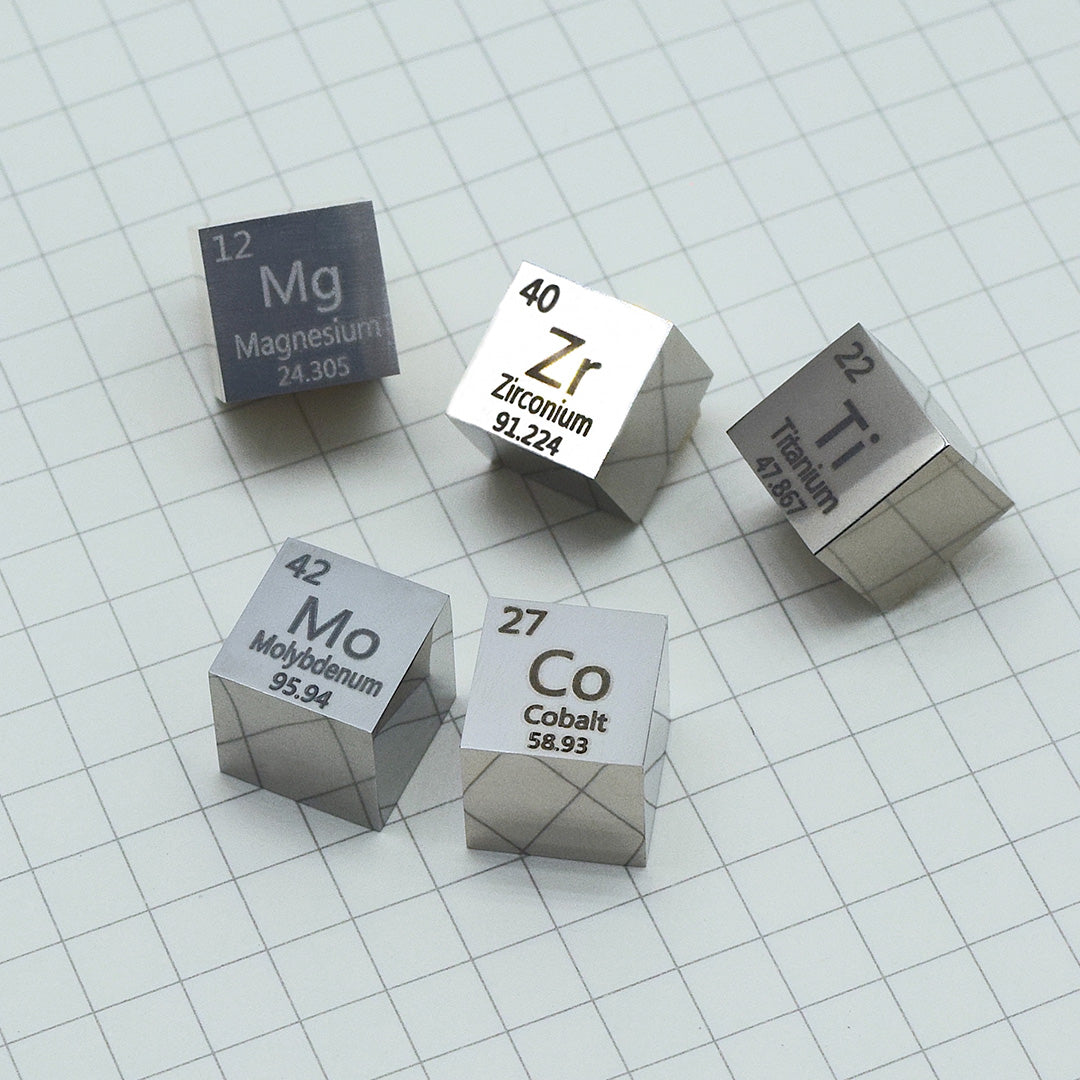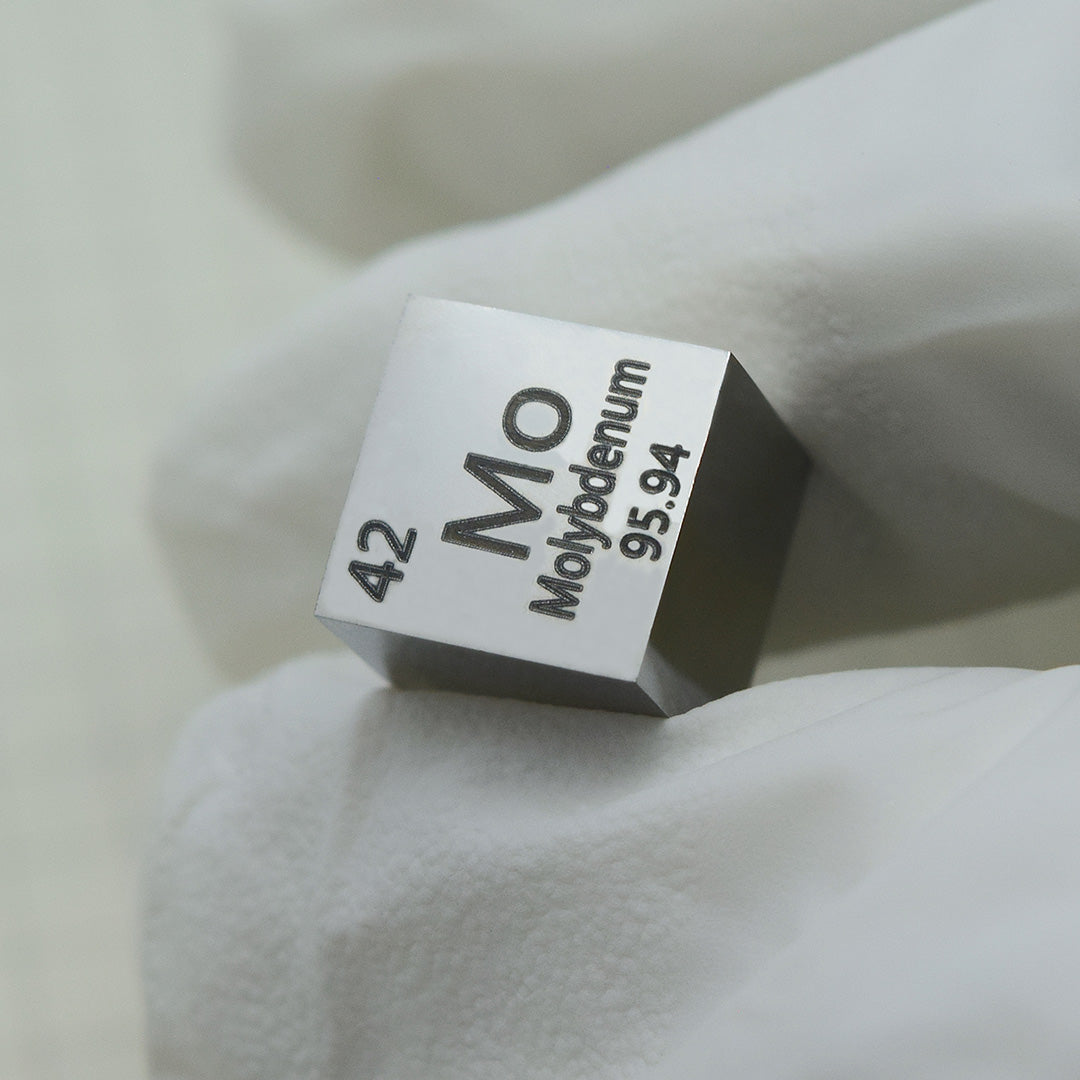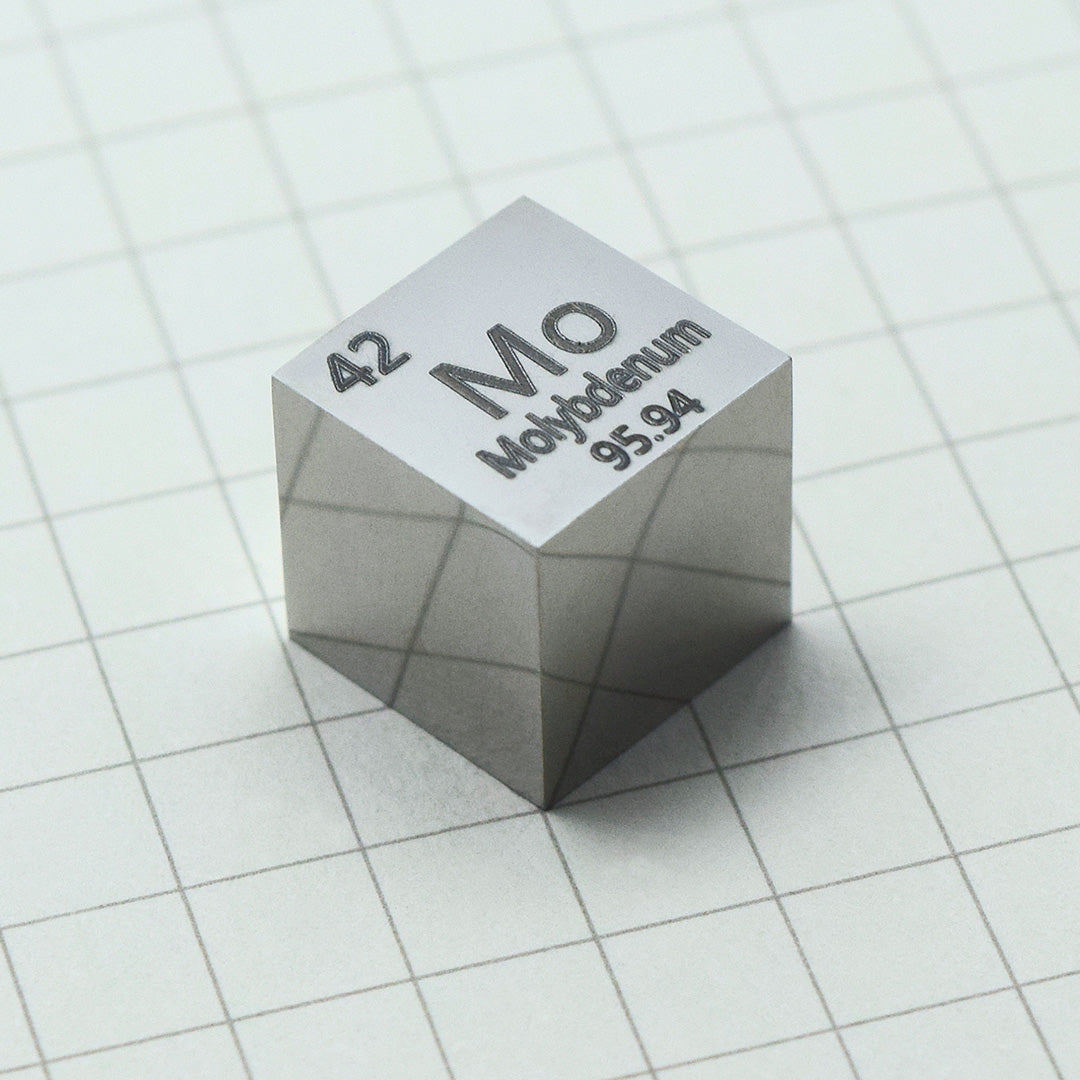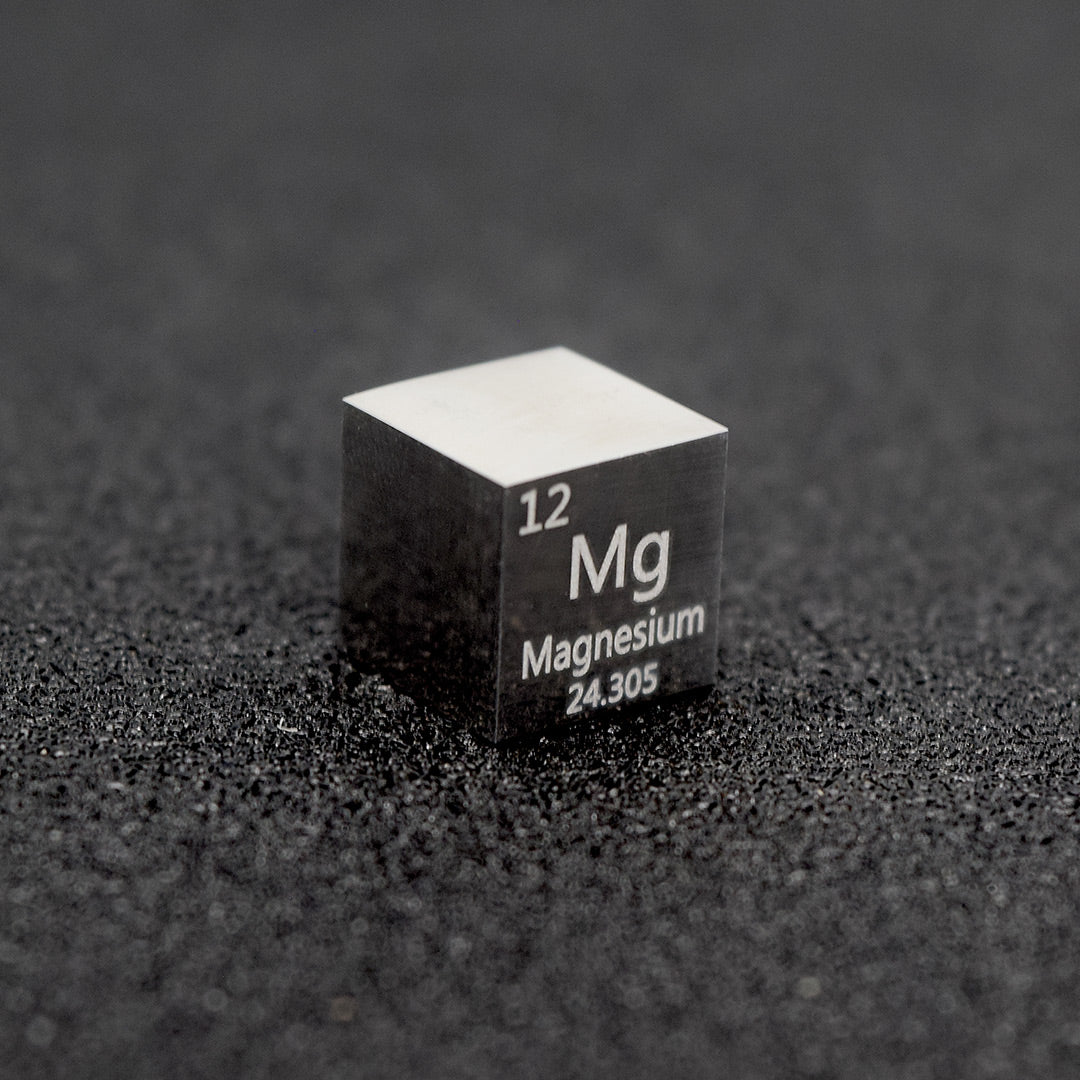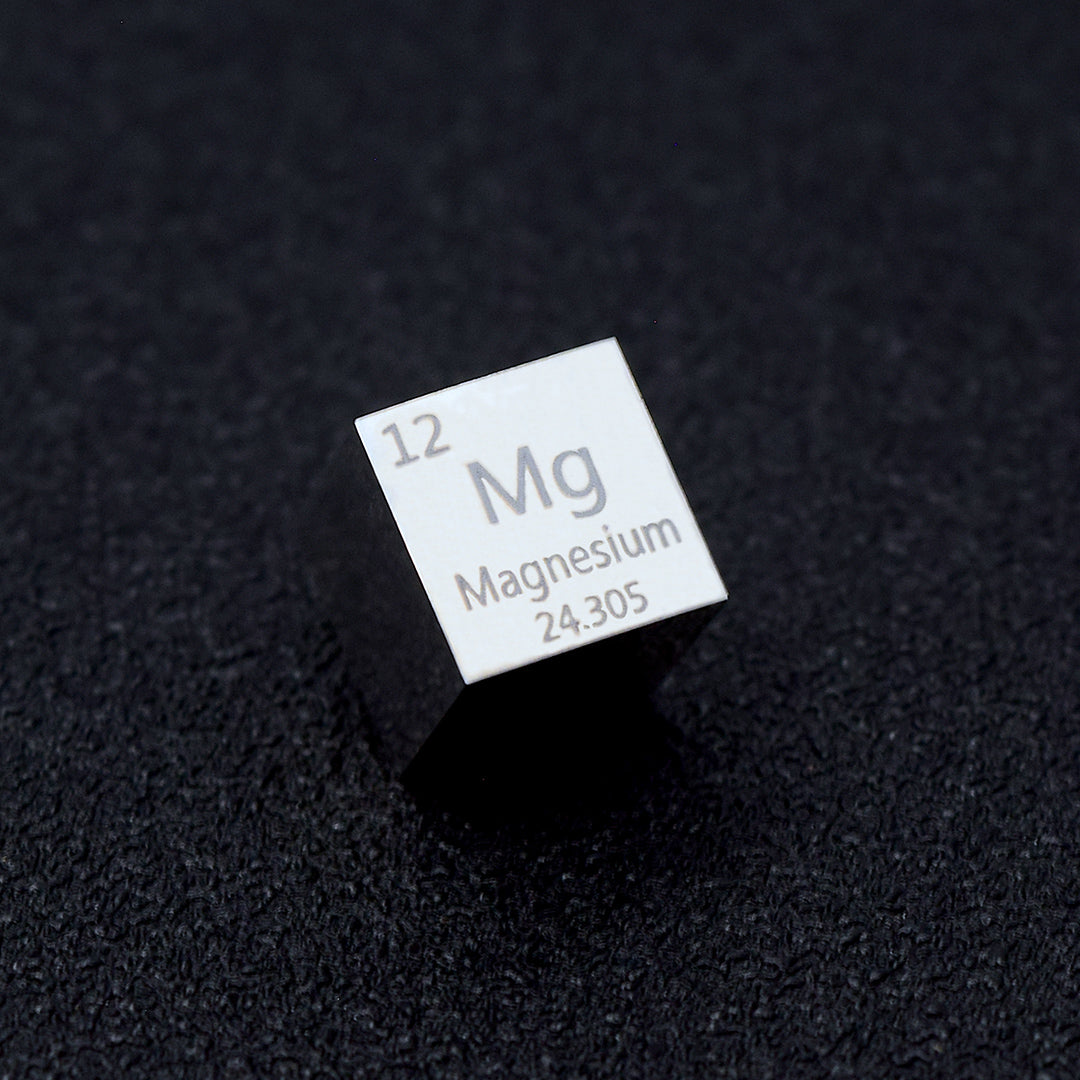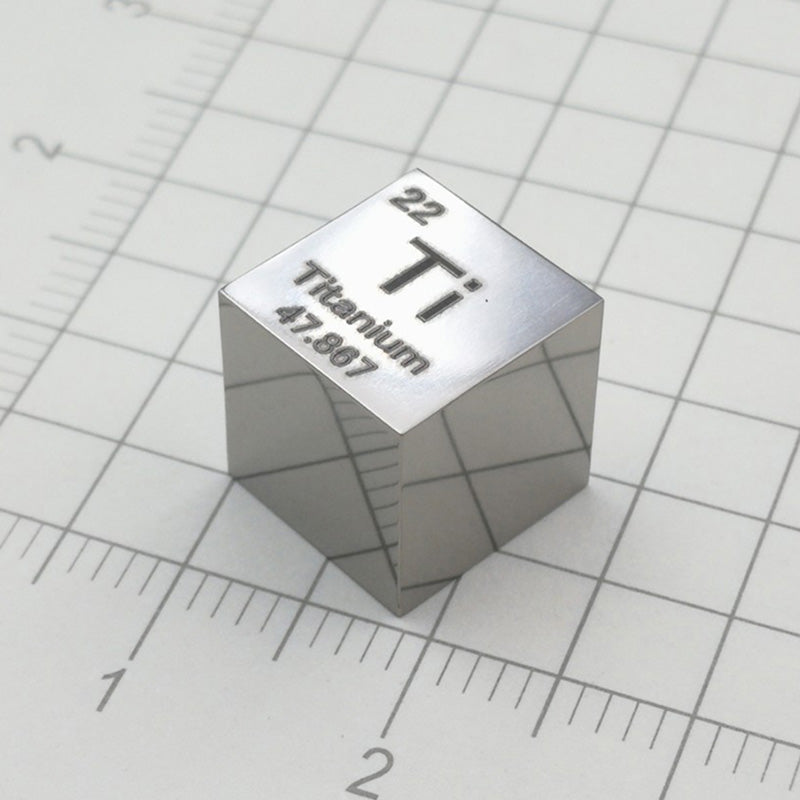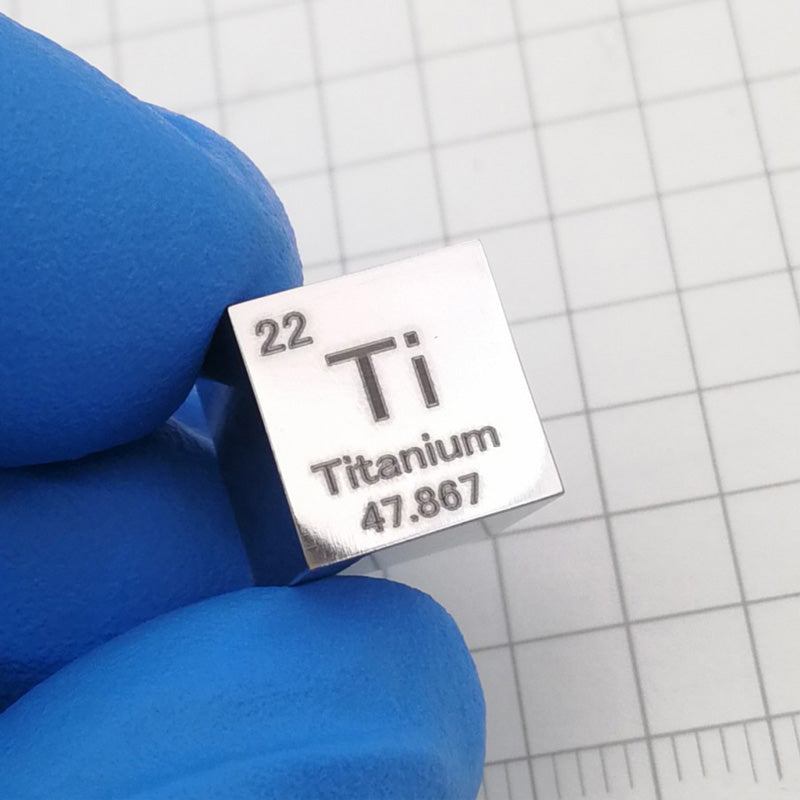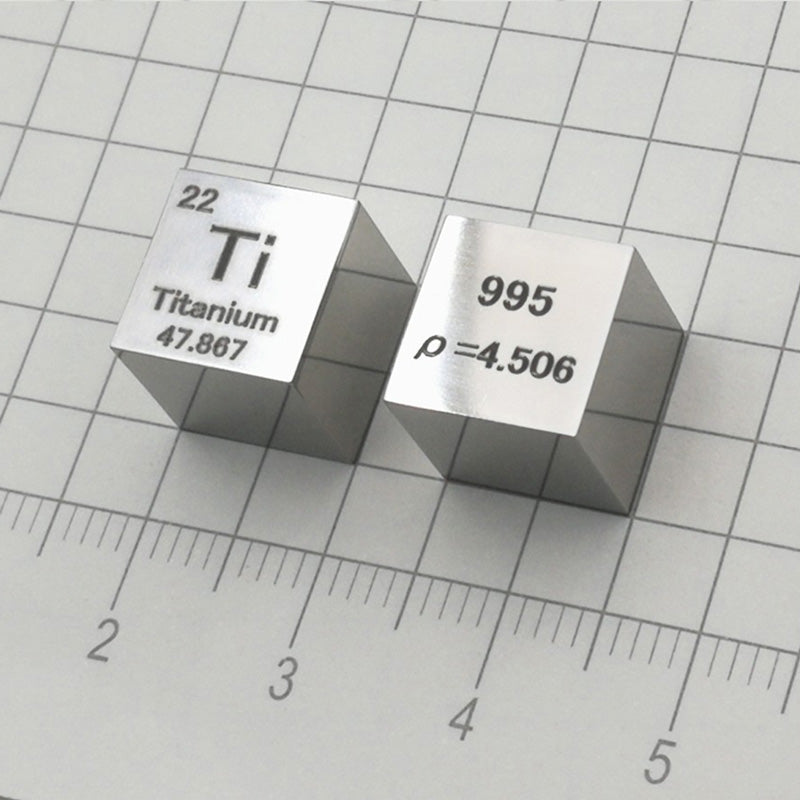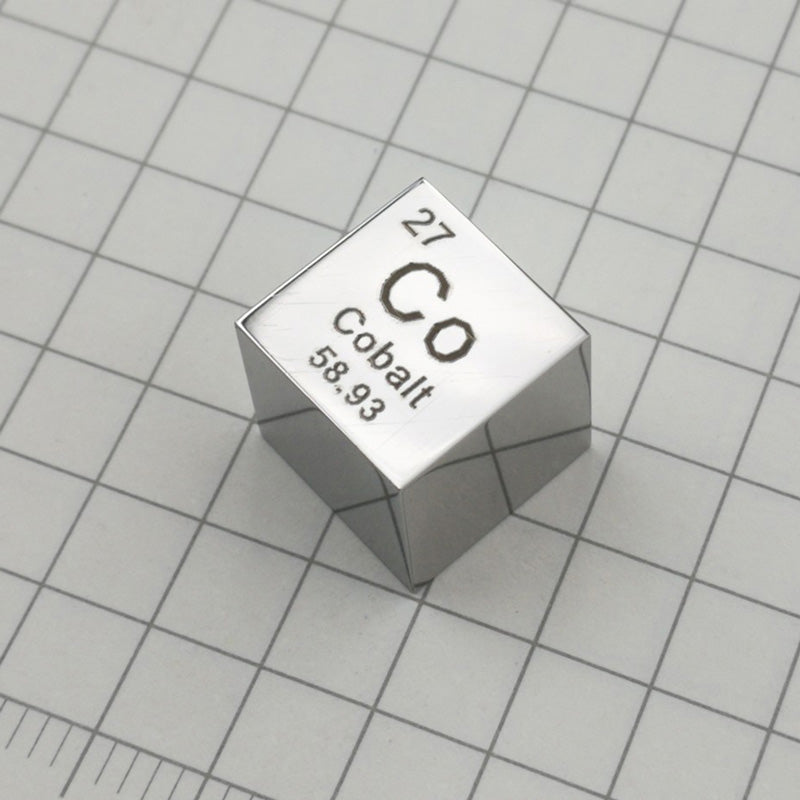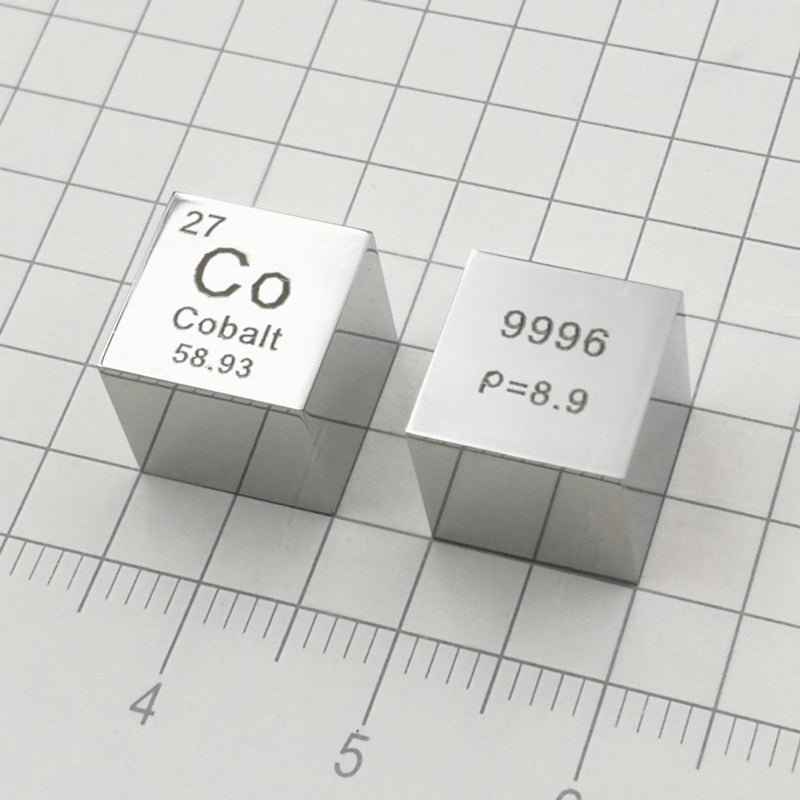Polar Metals
Mirror Polished Solid Metal Cubes // Interesting Metals (TIER IV)
Mirror Polished Solid Metal Cubes // Interesting Metals (TIER IV)
Couldn't load pickup availability
Elemental metallic 1 cm elemental cubes
These highly polished cubes are great educational tools
STORY
Each cube is highly polished by hand and laser engraved with its periodic info.
- Size: 10x10x10mm
- Surface: Mirror Finish
About the collection
THREE NEW ELEMENTS UNLOCKED!
Polar Metals seeks to spice up your life with interesting and unusual metals in unexpected ways. We bring you metals and elements that are perfect for display. Grow your display collection with the new elements unlocked.
New! Zirconium
- Its chemical and physical properties are similar to those of titanium
- Extremely resistant to heat and corrosion
- Lighter than steel
- Highly ductile and malleable
- When it is finely divided, the metal can spontaneously ignite in air
- Melting point: 1852 °C

Zirconium is very resistant to corrosion, which is why you’ll find zirconium used in many pumps, valves, heat exchangers, and more. You’ll also find a ton of zirconium in the nuclear power industry. It utilizes almost 90% of all the zirconium that is produced on an annual basis. It does not just exist on Earth, NASA has found zirconium in some of the lunar rocks obtained from the moon.
New! Magnesium
- Less than 1/10 the density of our Tungsten sphere!
- The lightest metal used for engineering
- Only 2/3 the density of Aluminum but has comparable strength
- Highly flammable when powdered or cut into thin strips
- We can't live without it! A building block for our bones and other biological processes

Magnesium is a really cool metal. One of the most popular applications of magnesium is in the automotive industry. It is considered a step up from aluminum in high-strength weight reduction, and it’s not astronomically more expensive. Some places where you’ll see magnesium on a performance car are in the wheel rims, engine blocks, and transmission cases.
New! Molybdenum
- It is an essential trace mineral
- Found in foods such as milk, cheese, cereal grains, legumes, nuts, leafy vegetables, and organ meats
- It works in the body to break down proteins and other substances
- Has the lowest coefficients of thermal expansion among commercially used metals.
- Melting point: 2623 °C

The application of molybdenum in the steel industry ranks first, accounting for about 80% of the total consumption of molybdenum, followed by the chemical industry, which accounts for about 10%. In addition, molybdenum is also used in electrical and electronic technology, medicine and agriculture, accounting for about 10% of total consumption.
Titanium
- The most biocompatible and safe metal for the human body
- The only element that your body fully accepts - even bone will grow around it
- Named after Titans of Greek mythology because of its immense strength
- The highest strength-to-density ratio of any metallic element
- Shockingly rigid and lightweight, less than half the density of steel
- Excellent resistance to corrosion, nearly equivalent to platinum
- Non-magnetic - won't attract metallic filings from other tools
This is a really amazing modern metal. It was first discovered in 1791, first created in its pure form in 1910, and first made outside of a laboratory in 1932. It is actually really common (the 7th most abundant metal on Earth), but it's really hard to refine. That's why this metal is so expensive. It's also really worthwhile.
Titanium nitride (titanium that’s reacted with nitrogen in a high-energy vacuum) is an insanely hard and low-friction coating that’s applied to metal cutting tools.
The reason that titanium resists corrosion is that it instantly reacts with oxygen, creating a really thin, hard barrier that protects the metal. If you scrape off the barrier, a new one instantly forms. It’s kind of like its self-healing.
Cobalt
- Has a metallic luster of silver-gray
- Melting point 1495℃
- Ductile and ferromagnetic
- Keeps magnetism with only one magnetization
- The curie point of cobalt is 1150℃ (Iron: 769℃, Nickel: 358℃)
- It is a very scarce small metal resource and is known as “industrial monosodium glutamate” and “industrial tooth”.
- It is one of the important strategic resources.

Cobalt has been used for a long time to make blue pigment in paints and dyes. Today, it’s primarily used in makingwear-resistant, high-strength steel alloys. Cobalt is very rarely mined by itself, it’s actually a by-product of the production of copper and nickel.
In aviation, cobalt is used in engines because of the high temperatures they can reach. Engines often reach over 1,400 degrees celsius making cobalt a necessity because of its high melting point of 1,495 degrees celsius. Its high melting point allows it to withstand extreme temperatures easier.

Get the whole collection now!
*Note: Please wear gloves when handling.
Share
